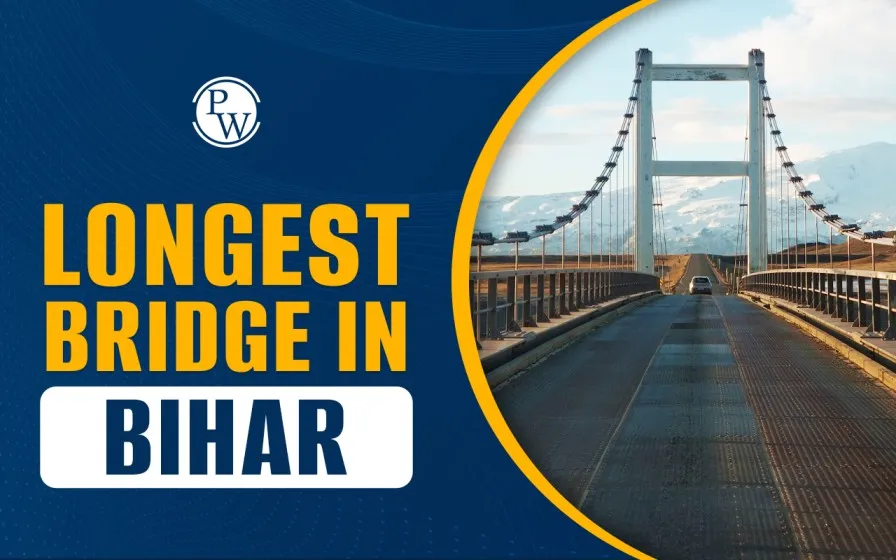
Longest Bridge in Bihar: The Mahatma Gandhi Setu, spanning the holy Ganges River in Bihar is the longest bridge in Bihar. As one of the longest bridges in India, it has played a pivotal role in enhancing transportation connectivity across the region. Serving not only as an important infrastructural link between northern and southern Bihar, but also connecting the city of Patna, the capital of Bihar, to key towns like Hajipur and Muzaffarpur, the Mahatma Gandhi Setu is a lifeline for millions of people.
Also read: Traditional Food of Bihar
The Mahatma Gandhi Setu is an iconic bridge located in the Indian state of Bihar, named in honor of Mahatma Gandhi, the Father of the Nation. This bridge connects Patna, the capital city of Bihar, with Hajipur, a town in the Vaishali district, across the mighty Ganges River. It is one of the longest river bridges in India, stretching for a total length of 5.575 kilometers (3.46 miles).
The bridge holds immense importance as it provides a direct road link between the northern and southern parts of Bihar, improving connectivity between various towns, villages, and cities in the region. It is particularly crucial for transportation, trade, and the movement of goods, passengers, and services.
Also read: Famous Writers and Poets from Bihar
The Mahatma Gandhi Setu is a remarkable feat of civil engineering. The bridge is designed to bear the heavy load of traffic and the rigors of the changing weather conditions of Bihar. Here are some of its key features:
The Mahatma Gandhi Setu is 5.575 kilometers long, making it one of the longest bridges in India. It has 48 spans, with each span measuring approximately 100 meters. The bridge’s width varies but generally accommodates two lanes of traffic in each direction.
The bridge is primarily made of steel and concrete to ensure its strength and stability. The concrete piers and steel girders make it capable of withstanding the pressures from both vehicular traffic and the river's flow. The use of high-quality materials in its construction was crucial to ensuring the durability of the bridge.
The Mahatma Gandhi Setu links Patna, the capital of Bihar, with Hajipur, a town in Vaishali district. It serves as an essential link between the northern and southern parts of Bihar, connecting major cities and towns, including Muzaffarpur and Darbhanga. The bridge is vital for improving access to regions of Bihar that were previously underserved by road infrastructure.
Also read: List of Governors of Bihar
The Mahatma Gandhi Setu holds immense significance for Bihar, both economically and socially. Some of its key roles include:
The primary function of the bridge is to provide seamless connectivity between Patna and Hajipur, and subsequently, between the northern and southern regions of Bihar. It significantly reduces travel time between these areas and ensures the smooth flow of people and goods. This has been particularly important for local farmers, who can now transport their produce more efficiently to urban markets.
By improving access to key towns and cities, the Mahatma Gandhi Setu has played a crucial role in the economic development of Bihar. The bridge has facilitated trade, tourism, and commerce by ensuring easy transportation of goods and services. With better road connectivity, industries and businesses have been able to flourish in the region, providing employment and boosting the state’s economy.
The Mahatma Gandhi Setu has also had a significant social impact. It has made it easier for people to travel for education, healthcare, and employment. The bridge has helped reduce the physical isolation of rural areas and made it possible for residents of these areas to access important urban amenities more easily.
Also read: Famous temples in Bihar
